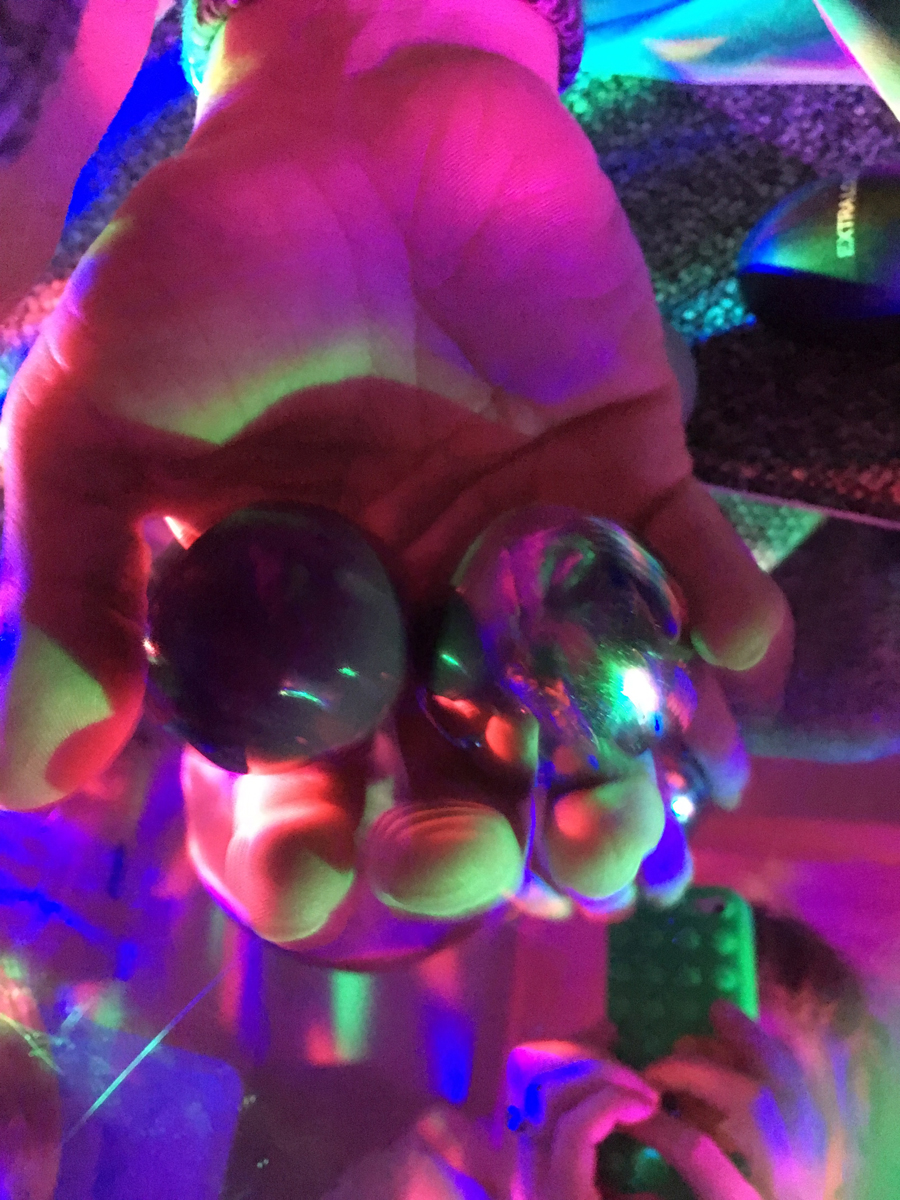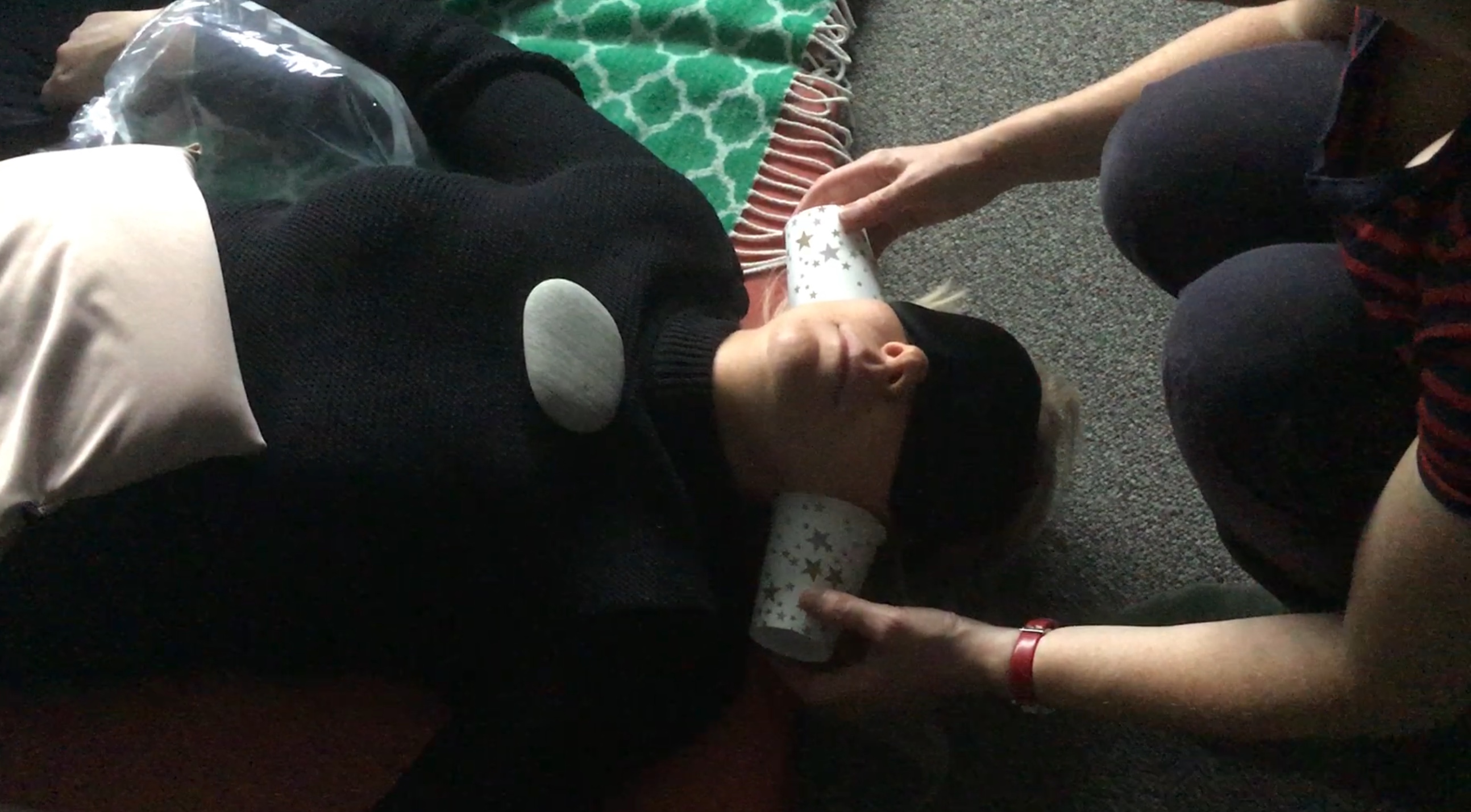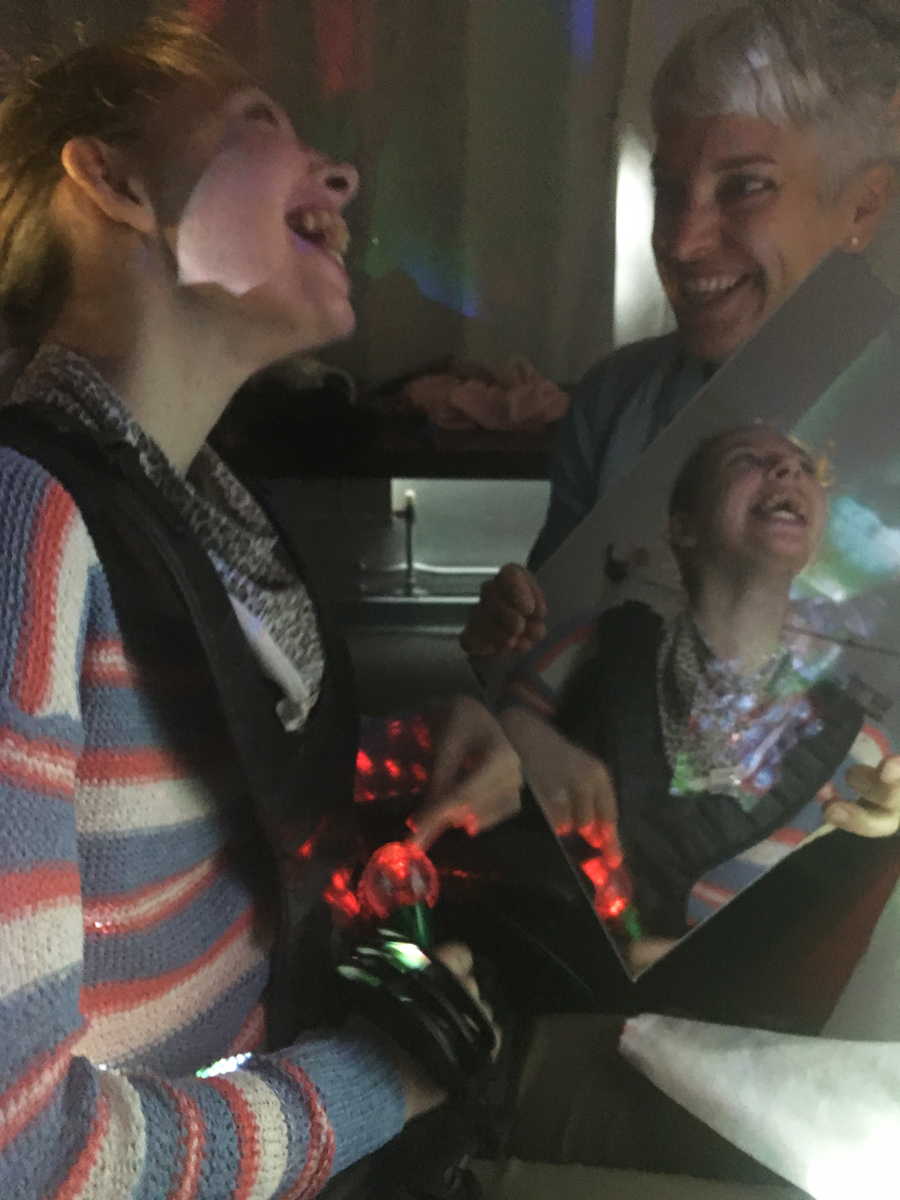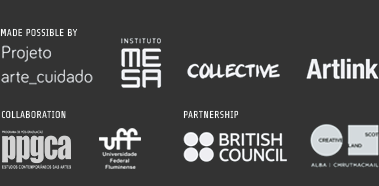
Alistair’s hand, Artlink Workshop, July 2017 Photo: Laura Spring
Sensory Experiences: Another Language to Learn
Laura Spring
There were moments in Rio when we were invited to participate in more intimate and sensory experiences; these were some of the most powerful exchanges for me. Surprising exchanges that captured unexpected raw emotion – an invitation to stand together in a circle around a series of objects (a stone, a burning candle, a glass of water and a lit incense stick), eyes firmly closed, a voice speaking gently in Portuguese, another voice drifting in and out of my ear translating words into English: “Think of your mother, think what she’s doing right now, think of the meal she’s preparing…”; “Think of your grandmother…” Tears immediately slipped down my face upon hearing these words, my eyes were closed and the voice carried me off to another place. I thought of my mother and cried, in a roomful of people I barely knew the week before.

Fig. 1. Lygia Clark Workshop, Edinburgh, December 2017 Photo: Laura Spring
Another invitation – this time to lie down on a circle of mats that had been positioned on the floor. We lay down, our eyes closed, hands held firmly at first and our feet touching in the centre of the circle. As time passed by, our grip relaxed and hands became loose in each other’s, but contact was still there. The time passed at a speed I couldn’t quantify, objects were rolled, brushed, squeezed, scattered and dragged gently over our bodies. My senses were alert but I felt calm and relaxed. I felt complete trust in what was happening to me and soon objects that had felt heavy, felt weightless. My senses were shifting, heightened, and yet I felt completely at ease. The workshop was a re-creation of one of Brazilian artist Lygia Clark’s collective proposals using her Relational Objects.1
These exchanges resonated so closely with the work I and other artists do with Artlink. Back in Scotland, at Cherry Road Learning Centre – a publicly run day centre for adults with complex developmental, cognitive disabilities and autism – Claire and I recreate the Lygia Clark workshop.2 Artists and care workers lie in a circle, objects are rolled, brushed, squeezed and dragged. The effect is the exact same. No language just calm, relaxing sensations.
Fig. 2. Alistair and ball, Artlink Workshop, July 2017. Video: Laura Spring
On a weekly basis I make invitations and exchanges with the people I work with at Cherry Road through objects, sound, light, texture or touch. There’s a moment when I hand Alistair (a service user) a round, shiny metal ball that makes a soft ringing sound as it moves in the palm of his hand. Our heads are close, we’re sitting cross-legged opposite each other on the floor. I put the ball on a mirror on the floor and he picks it up. He moves the ball and it chimes as it rolls gently around the palm of his hand. I remain silent, watching and listening to the movement and sound of the ball. Then he looks up, his eyes lock with mine and for a moment we’re there together, experiencing the sound and texture of that ball.

Fig. 3. Isla laughing, Artlink Workshop, November 2017 Photo: Laura Spring
Isla is in hysterics. The most hysterical laughter I’ve ever heard from her. We’re playing loud pop music, lights are flashing and Lauren (another artist) is tickling her face with a brush. Isla’s laugh is infectious, we’re sitting on the floor in front of Isla in her wheelchair, she makes big belly laughs and it’s impossible not to join in.
It’s always hard to capture the intimacy and importance of these moments in words. It might seem so simple – a gentle brush on a face, a UV pen drawing over someone’s body, a ball jiggling in a hand, a slurping noise made nose to nose – but they’re all incredibly powerful moments of communication. Regular language doesn’t seem relevant. We create a new language together through trial and error over months and years of working together. I’m always learning from the people I work with, I never know what to expect from session to session, a bit like my experiences in Rio. I had no idea what to expect and language wasn’t always important because some communication doesn’t require words. There’s always another language to learn.
***
Laura Spring
Is a textile designer/maker living and working in Glasgow. Bold, graphic prints combined with bright colors transformed into beautifully crafted products are at the core of her design practice. With a passion for color, print, pattern and process, Laura creates a covetable collection of functional homewares and accessories as annual collection. In 2011, Laura established her own eponymous label and print studio in the heart of Glasgow and shows her collection worldwide. Collaboration has always been integral to her work both in design and with Artlink and she values the sharing of knowledge and skills with others as a way of learning, designing and making. Within this work she experiments with other means of communication beyond the spoken word, placing emphasis on the slightest gesture as a way of establishing working relationships.
_______
1 This therapeutic experience, known as Rosácea, is a re-creation of one of Clark’s collective therapeutic proposals using her Relational Objects. It was proposed for us by the therapist Gina Ferreira whose project Arte,Corpo Sensibilidade (Art, Body, Sensibility), under the auspices of the Museum of Images of the Unconscious, draws on Clark’s relational practice to treats patients with psychiatric conditions at Nise da Silveira Institute. E.N. For more information on Clark’s Relational Objects and her artistic therapeutic processes see the following essays in this edition of Revista MESA: Lula Wanderley “To Better Understand Lygia Clark” [http://institutomesa.org/revistamesa/edicoes/5/portfolio/2443/?lang=en] and the dialogue between Gina Ferreira and Ana Vitoria [http://institutomesa.org/revistamesa/edicoes/5/portfolio/ana-vitoria-e-gina-ferreria-en/?lang=en]
2 E.N. Cherry Learning Centre offers tailored and personalized experiences supporting adults with learning disabilities and adults with autism. Formerly based on a more traditional model of care, the service recast itself in collaboration with leading arts and disabilities organization, Artlink. This enabled the service to develop imaginative and enriching experiences for people and has significantly improved how the service supports people with very complex needs, leading to sustained positive change and contributing to reduced use of health and care services. For more information see the other essays in the case study on Artlink in this issue.



